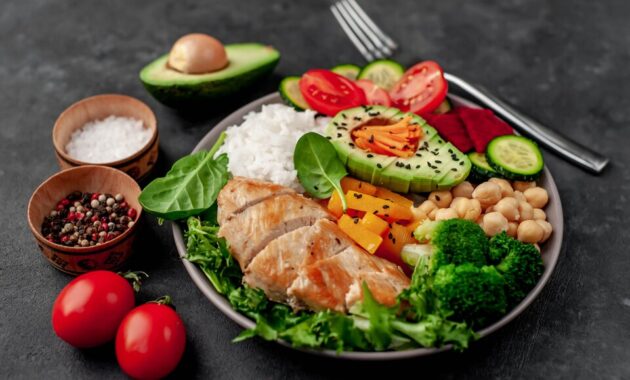Many people experiment with various diet trends. Low-calorie diets, on the other hand, can be detrimental to one’s metabolism. Because the circumstances are so extreme, they set people up for disappointment since they have unrealistic expectations. Although metabolic adaptation is accurate, a low-calorie diet plan fails because it cannot be maintained, causing people to binge.
So, running a large deficit won’t last long and is terrible for your health. It is more reasonable to be slightly overweight, enjoy our food, and live a happy life. This gives you the energy to go to the fitness center, build muscle, and progress. As a result, the Paleo diet plan arrives into play.
What’s The Paleo Diet?
People used to move from place to place. They moved from one location to another in search of food. They obtained their food and supplies directly from nature by foraging for vegetables and other items. Everything available today has been processed.
Even raw vegetables and meat purchased at a local supermarket are not guaranteed to be free of additives, hormones, and growth hormones. Since then, more people have adopted the paleo diet. We need to start eating how our bodies are designed to be fed to reach our genetic potential.
Finally, this allows us to begin living healthier lives right away. The Paleo diet derives its name from eating in the manner of the Palaeolithic era. This is also known as the stone age diet, hunter’s diet, or caveman diet.
The Paleo diet is based on popular foods from 2.5 million to 10,000 years ago. Paleo dieters believe humans have not evolved sufficiently to process modern farm products such as dairy, grains, artificial sweeteners, and trans fats.
Should I Go With The Paleo Diet?
It’s always a good idea to consult a professional, such as a nutritionist, before starting a strict diet. The effects of the paleo diet were compared to those suggested for people with insulin resistance. In a study conducted by the Dutch Health Council in 2014, this condition increases the risk of heart disease.
The result was decreased blood pressure and a shift in the blood lipid profile. Both of these modifications are beneficial to heart health. The Paleo diet is high in minerals, vitamins, and other essential nutrients not found in most processed foods today.
The Paleo diet is an excellent way to improve your health by eliminating processed and high-trans-fat foods. This diet was not designed to help people lose weight because it authorize you to eat high-calorie nuts and seeds. It was created for people to be more aware of how their eating can affect their health.
You can only consume meat, fish, vegetables, fruits, and nuts. These foods are nutrient-dense. They will fill you up without providing as many calories as junk food. You are eliminating all high-calorie, unhealthy, and nutritionally deficient foods.
No grains (such as pasta, rice, or bread), beans, or dairy exist. It’s also important to understand that you can’t consume soda or other sugary foods. And because entire food groups are eliminated, the body will burn more calories.
Paleo Diet Food List
The paleo diet meal plan includes a diverse selection of foods. Even though the body requires fat, it has been vilified. Omega-3 fatty acids also other healthy fats are essential components of our diet. Fat is an integral part of the paleo diet.
Many Healthy Fats Are Acceptable On The Paleo Diet, Including:
Avocados: A whole avocado contains between 200 and 300 calories.
Almonds: One serving of almonds contains 162 calories.
Walnuts: A serving of walnuts contains 185 calories.
Coconut oil: 100 gms of coconut oil control 862 calories.
Olive oil: 100 gms of olive oil control 884 calories.
Other Foods Included In The Paleo Diet Include:
Lean meats include pork, beef, and chicken, preferably grass-fed, organic, or free-range.
Bison, quail, and venison are examples of game animals.
Eggs, preferably from pastured chickens, but only a few per week.
Even shellfish are classified as fish.
Apples, strawberries, mangoes, and figs are examples of fruits.
Vegetables with little starch, such as pumpkin, peppers, and onions.
Things To Avoid On The Paleo Diet
Sugar from sources other than fruits is rarely permitted on the paleo diet food list. Grains are also prohibited because they have been modified in some way. People eat far too many grains, such as bread. They cause variations in blood sugar levels and are high in calories but minimal in nutrients. Lecithin is a naturally occurring poison found in grains.
This protects the plant from being eaten by itself. Plants have evolved this method of producing a toxin so that animals cannot consume it. When lectins enter the gut, they prevent our cells from repairing the regular damage that occurs. This is highly damaging. Another reason grains should be avoided is gluten.
Gluten is a type of albumen found in grains such as rye, barley, and wheat. Many of our people are now said to be gluten intolerant. Gluten-intolerant people can develop a variety of wellness issues and conditions over time. This includes dermatitis, painful joints, acid reflux, and other complications associated with becoming pregnant or having children.
As A Result, The Following Foods Are Prohibited On The Paleo Diet Food List:
Wheat, oats, and barley are examples of grain crops.
Legumes include peas, lentils, beans, and peanuts.
Cheese and milk
fabricated sugar
Salt
Potatoes and other starchy tubers
Packaged high-processed foods such as chips, cookies, and biscuits
Conclusion
Overall, it’s safe to say that everyone’s body is unique. What works well for one person might not be the most effective way to eat for another. The paleo diet is a single of many influential diet trends. Before deciding, it is critical to consult with experts about one’s lifestyle.


